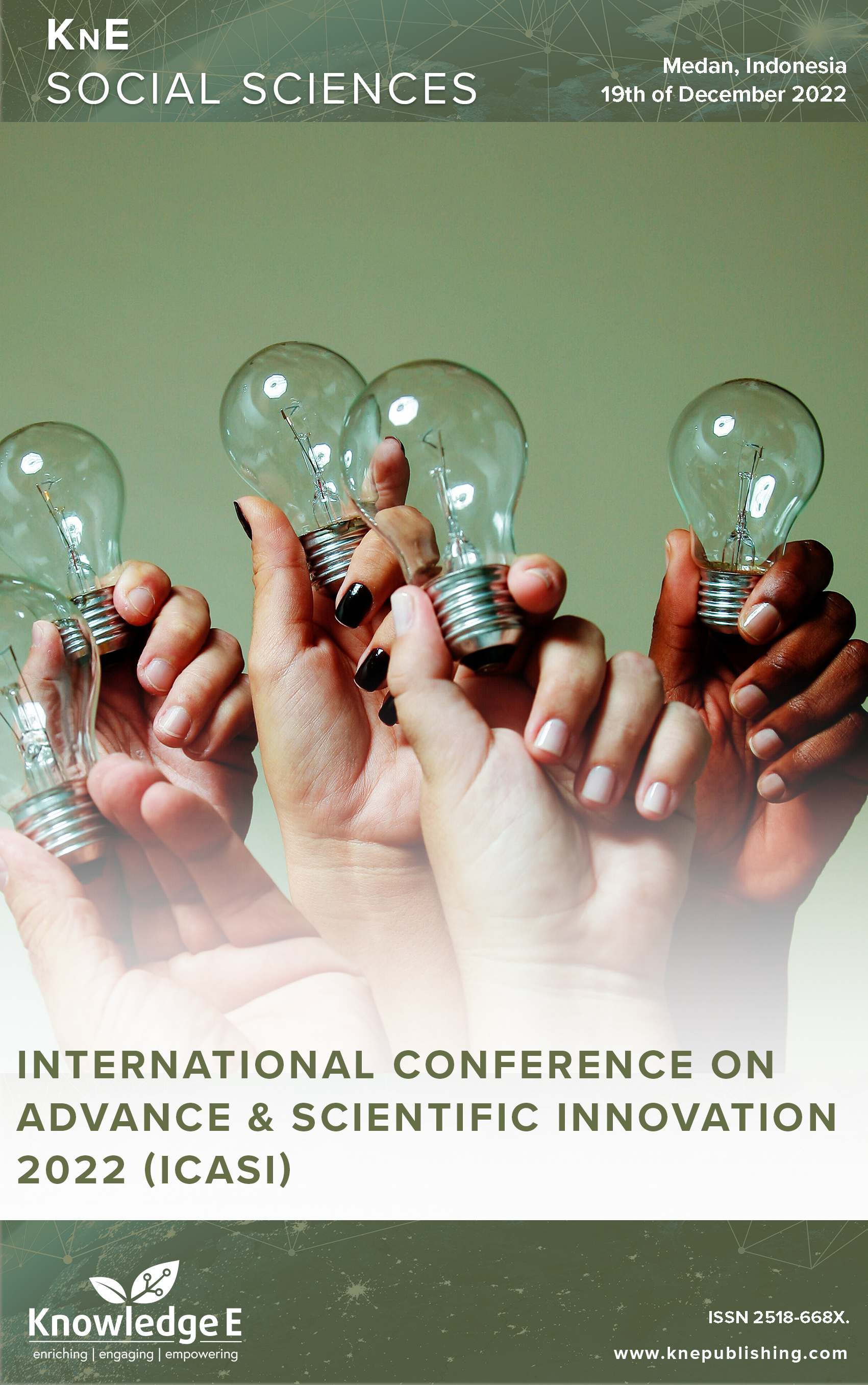Perceptions of Youth Religious Understanding of Natural Disaster Resistance and Preparedness
DOI:
https://doi.org/10.18502/kss.v8i9.13333Abstract
Indonesia is a country with the largest Muslim population in the world. In 2010, according to the Central Bureau of Statistics, Indonesia’s population was 237 million, with an average age of 27.2 years. The composition of the population living in villages and cities is quite balanced, but generally they live on the island of Java, which has a population of 57.5%. Of this population, around 32.3 million people live in Central Java, which is known as supermarkets for natural disasters, ranging from earthquakes, fires, tsunamis, floods, landslides, and eruptions. Central Java experiences disasters of land and forest fires every year, extreme weather, drought, infectious diseases, rob, and tornadoes. The paper aims to explore the religious understanding of young people toward natural disaster resilience and preparedness. This study found that religious understanding generally does not affect Muslim youth regarding resilience and preparedness when facing natural disasters. Young people understand disaster risk and utilize technology to regularly monitor disaster situations. However, the attitude of young Muslims regarding resilience and preparedness is relatively worrying. This study provides an empirical basis for efforts to increase disaster-resilient awareness, especially for youth living in Muslim-majority countries.
Keywords: perceptions, youth religious, natural disaster resistance
References
[2] Mugiyana. “Jateng Supermarket Bencana Alam.” Suara Merdeka. 2019.3. Chan EY, Man AY, Lam HC. Scientific evidence on natural disasters and health emergency and disaster risk management in Asian rural-based area. Br Med Bull. 2019 Mar;129(1):91– 105.4. Badan Penanggulangan Bencana Daerah Jawa Tengah. Laporan Bencana. BPBD Jawa Tengah; 2020.
[3] Saifudin S. “Sak Uwong Sak Uwit Policy: Environmental Conservation Strategy.” Walisongo Law Rev. 2019;1(2).6. Prior T, Roth F. Disaster, resilience and security in global cities. J Strateg Secur. 2013;6(2):59–69.
[4] Nurdin N. “Ke Belanda, Ganjar Akan Sampaikan soal Ilmu ‘Titen’ dari Tanah Jawa.” Kompas.com. 2016.
[5] Wihartati W. Dakwah Pada Korban Bencana Alam dan Bencana Sosial. J Ilmu Dakwah. 2014;34(1):277–294.
[6] Feener M, Daly P. Religion and reconstruction in the wake of disaster. Asian Ethnol. 2016;75(1):191–202.
[7] Chester DK, Duncan AM, Dhanhani HA. Volcanic eruptions, earthquakes and Islam. Disaster Prev Manag. 2013;22(3):278–292.
[8] Davis EB, Aten JD, Van Tongeren DR, Hook JN, Davis DE, DeBlaere C. “Advancing scientific research on disasters, religion and spirituality.” J Psychol Cris. 2018;37(1):87.
[9] Tasic J, Amir S. Informational capital and disaster resilience: The case of Jalin Merapi. Disaster Prev Manag. 2016;25(3):395–411.
[10] Park CH, Johnston E. Determinants of collaboration between digital voluneteer network and formal response organizations in catastrophic disasters. Int J Organ Theory Behav. 2019;22(2):155–173.
[11] Etkin D. Disaster theory an interdisciplinary approach to concepts and causes. Oxford: Elsevier; 2016.
[12] Zakour MJ, Gillespies DF. Community disaster vulnerability theory, research and practice. New York: Spinger; 2013. https://doi.org/10.1007/978-1-4614-5737-4
[13] Wehde W, Nowlin MC. Public attribution of responsibility for disaster preparedness across three levels of government and the public: Lessons from a survey of residents of the U.S. South Atlantic and Gulf Coast. Publius. 2020 Oct;37.
[14] Geographical Science Committee Committee on Private-Public Sector Collaboration to Enhance Community Disaster Resilience National Research Council, Building Community Disaster Resilience Through Private-Public Collaboration. Washington: The National Academic Press; 2011.
[15] Parthasarathy D. Informality, resilience, and the political implications of disaster. Pac Aff. 2015;88(3):551–575.
[16] Tudor R, Maidment J, Campbell A, Whittaker K. Examining the role of craft in postearthquake recovery: Implications for social work practice. Br J Soc Work. 2015 Dec;45(1 suppl 1):i205–i220.
[17] Matsuura S, Razak KA. Exploring transdisciplinary approaches to facilitate disaster risk reduction. Disaster Prev Manag. 2019;28(6):817–830.
[18] Sugimoto M, Iemura H, Shaw R. Tsunami height poles and disaster awareness: Memory, education and awareness of disaster on the reconstruction for resilient city in Banda Aceh, Indonesia. Disaster Prev Manag. 2010;19(5):527–540.
[19] Grayman JH, Bronnimann K. A tale of two museums in post-tsunami and post-conflict Aceh, Indonesia. Tour Disaster Confl Nexus. 2018;18:105–117.
[20] Bradley M. More than misfortune: Recognizing natural disasters as a concern for transitional justice. Int J Transit Justice. 2017 Nov;11(3):400–420.
[21] Mulyasari F, Takeuci Y, Shaw R. “Implementation tools for disaster education.” Community, Environ Disaster Risk Manag. 2011;7:137–151.
[22] Gwee QR, Shaw R, Takeuci Y. “Disaster education policy: Current and future.” Community Environ Disaster Risk Manag. 2011;7:23–44.
[23] Mori M, Dermott RM, Sagala S, Wulandari Y. “Sinabung Volcano: How culture shapes community resilience”. Disaster Prev Manag. 2019;28(3):290–303.
[24] Wang C. Bracing for hurricanes: A qualitative analysis of the extent and level of preparedness among older adults. Gerontologist. 2018 Jan;58(1):57–67.
[25] Xu Z, Lachlan K, Ellis L, Rainear AM. Understanding public opinion in different disaster stages: A case study of Hurrican Irma. Internet Res. 2019;30(2):695–709.
[26] Gianisa A, Le De L. The role of religious beliefs and practices in disaster: The case study of 2009 earthquake in Padang City, Indonesia. Disaster Prev Manag. 2018;27(1):74–86.
[27] Sakai M, Isbah MF. Limits to religious diversity practice in Indonesia: Case studies from religious philantropic institutions and traditional islamic schools. Asian J Soc Sci. 2014;42(6):722–746.

